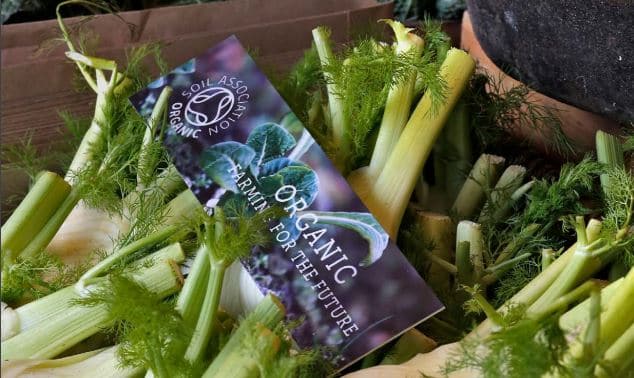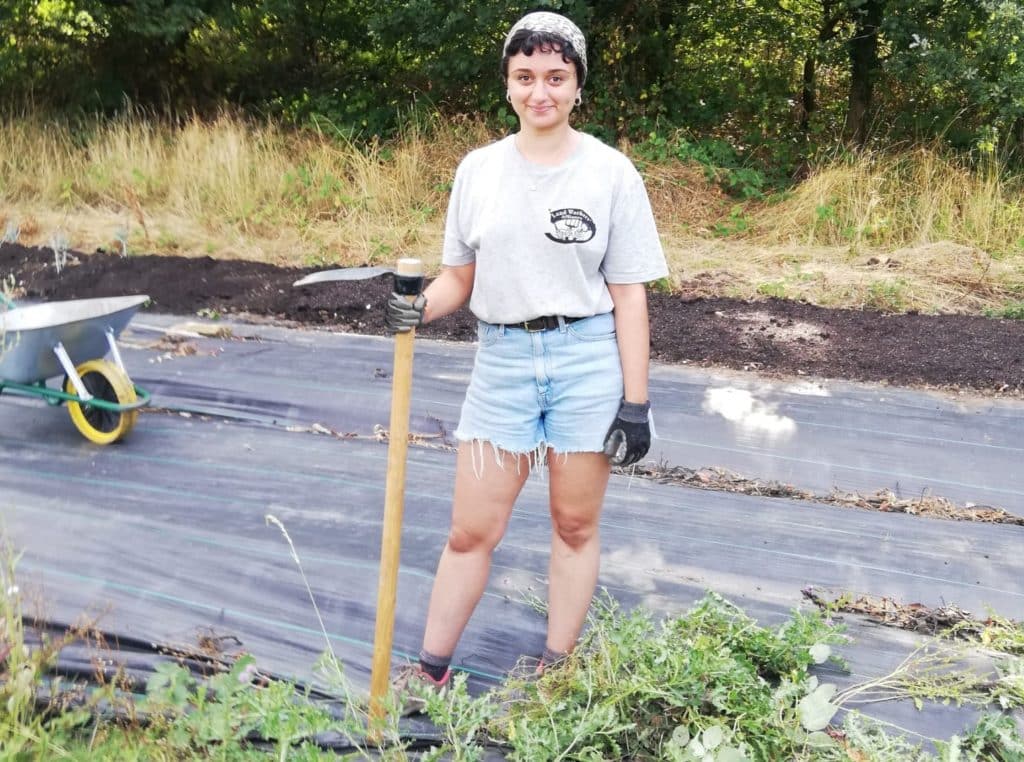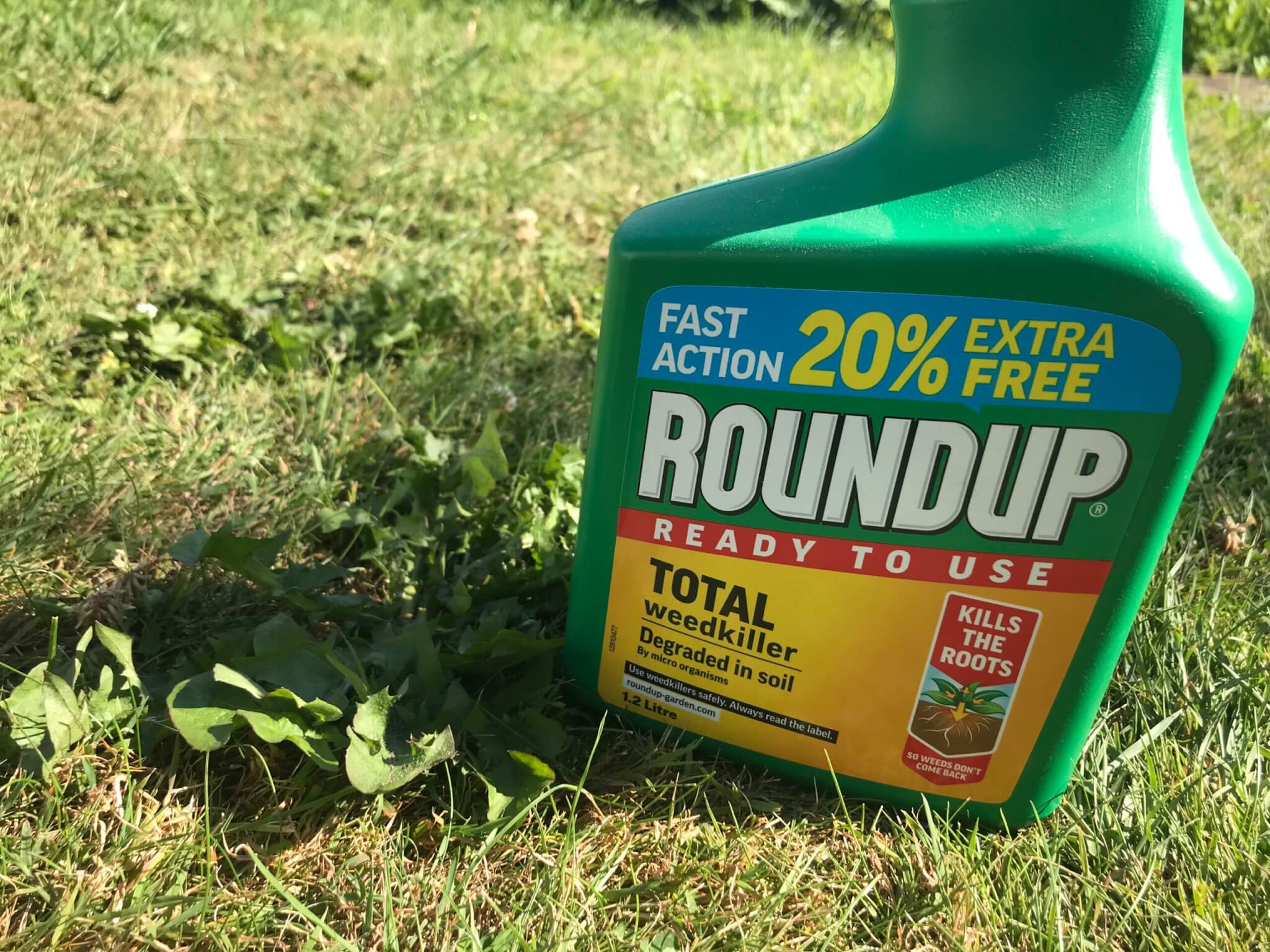Regenerative, organic, agroecological. You might encounter all of these terms in the search for ‘sustainably’ grown food (there’s another!). This word-soup is a sign that lots of farming communities are experimenting to find a better way, but as a consumer, it can be pretty confusing and leave us vulnerable to enticing marketing that doesn’t walk its talk.
Here’s a quick guide to each term, to help you make sense of labels, and separate the green from the greenwash.
What is organic farming?
Organic farming first arose in the 1940s, as a reaction against the industrialisation of agriculture. These days, it’s got a strict legal definition, and to call your produce “organic” you must be certified. In the UK, most organic goods are certified by the Soil Association or OF&G – just look for their stamps on the label.

Above all, organic farming is about nature: protecting it, enhancing it, and working in harmony with rather than fighting against it. The whole farm system works together with natural systems and cycles, for the good of the soil, plants, animals, humans, and wider environment.
Organic farmers:
- Don’t use artificial pesticides, fertilisers, or weedkillers
- Protect the health of the soil by using crop rotations to build its fertility naturally
- Guarantee the highest animal welfare standards of any farming system
- Encourage biodiversity and protect sensitive habitats
- Minimise waste, feeding as much as possible back into the farm
- Never grow genetically modified (GM) crops
Among many other detailed rules. Regular inspections make sure farmers are staying true to these standards.
Organic accounts for just three per cent of the UK’s farmland.
Organic accounts for just three per cent of the UK’s farmland. A broader, more accessible movement may well be needed – and regenerative is open to any farmer who wishes to work more sustainably, to whatever extent they can. But as a customer, it’s harder to know exactly what you’re buying.
What is regenerative farming?
Regenerative has been gathering speed as a grassroots movement among farmers over the past decade. It’s not yet a standardised system, like organic – instead, it’s more of a mindset. The phrase can be used to describe a broad range of farming activities which aim to restore healthy soils, clean water, and biodiversity.
Groundswell, the UK’s annual gathering of regenerative farmers, describes five key principles:
- Don’t disturb the soil by tilling, which damages its complex structure and biology.
- Keep the soil surface covered with plant-life, to protect it from erosion.
- Keep living roots in the soil, to feed the bacteria and fungi that keep it fertile, and also prevent erosion.
- Grow a diverse range of crops, rather than growing one crop intensively and repeatedly.
- Bring grazing animals back to the land, as part of a fertility-boosting rotation of crops and animals.
These have a lot of overlap with long-standing organic practices, but there are some key differences.
You may need to ask questions about the things that matter to you – how often do they spray with artificial pesticides? What are their standards of animal welfare?

First, how best to protect healthy soils? Organic farmers are permitted to till their fields, to kill weeds and fertilise without artificial chemicals. Regenerative farmers, on the other hand, may feel that it’s less damaging to sometimes spray their fields with agrichemicals such as glyphosphate (a practice adopted by many larger corporations who claim to be ‘regenerative’) rather than to disturb the soil with a plough.
Arguably, there isn’t a right or wrong here; both are damaging in different ways. That’s why many organic farmers also use low- or no-till methods, and many regenerative farmers also minimise their use of agrichemicals.
The key thing is not to fall for the greenwash. As reported by Food Unfolded, ‘the 2023 report by FAIRR looked at 79 global food and retail giants worth over $3 trillion and representing a third of the sector. They found that 50 of the 79 mega corporations mention regenerative agriculture initiatives in their disclosures. But relatively few of them could back up their claims meaningfully.
Of the 50 agrifood giants mentioning regenerative agriculture, only 36 per cent had any quantified regenerative targets. The lack of targets shows a disconnect between what they’re saying and implementing. But even those with targets weren’t necessarily doing much better. Only 16 per cent of the 50 companies discussed metrics or data, and only four had established baselines to measure progress. The most committed industry players will be disadvantaged if we don’t establish coherent baselines. If two companies tell us they’ve “improved soil health” on 90% of farms – but we haven’t established what “improving soil health” means, they could get the same recognition with drastically different contributions to the regenerative movement. In turn, this ambiguity can confuse consumers and water down meaningful change,’ concludes the report in Food Unfolded.
“The best organic farmers are regenerative, and the best regenerative farmers are organic,” says Harriet Bell, regenerative farming lead at organic veg box company Riverford.
The other vital difference is that because regenerative is not yet held to legal standards, it’s more vulnerable to greenwashing. Take two farmers who call themselves ‘regenerative’; the first might be practising just one principle, while the second might have designed an entirely holistic system.
What is agroecology?
Agroecology is not just a set of farming practices; it’s also a social and political movement, and a scientific discipline.
Like organic, agroecology first emerged in the 1940s. Ecologists study the relationships between plants, animals, people, and their environments; agroecologists consider how what we learn from ecology can be applied to agriculture, designing farm systems which mimic natural ecosystems.

If that sounds familiar, it’s because agroecology is an umbrella term which covers both regenerative and organic. The ideal agroecological landscape would:
- Provide nutritious food
- In a way that empowers and benefits the local community
- While being rich in biodiversity
- Resilient in the face of climate change
- And using natural resources, such as soil and water, as part of a regenerative system.
If we could achieve this, it would be the most sustainable farm in the world. Many farming systems, including organic and regenerative, are vital parts of our journey towards it.
Agroecology considers not just farming methods, but also the whole human system surrounding the farm.
However, agroecology is also broader and more holistic; it considers not just farming methods, but also the whole human system surrounding the farm. Agroecologists discuss all sorts of social justice issues within the global food system – such as how to address power imbalances, improve food security, reform land ownership, or value indigenous cultures and diets.
Individual regenerative and organic farmers may still consider these issues, but it isn’t baked into each movement’s principles. For example, organic veg box company Riverford is employee owned, guarantees the Real Living Wage, and has a Supplier Charter promising fair relationships with its suppliers – but this is all separate from its organic certification.
Where can you buy organic, regenerative, or agroecologically farmed food?
The easiest answer here is organic: just look for an organic certification stamp as you browse the shop shelves, or seek out specialised organic suppliers online.
For both regenerative and agroecological farming, the only real way is to try to meet your local farmers – via veg box schemes, butchers or farm shops, or through their social media. You may need to ask questions about the things that matter most to you – how often do they spray with artificial pesticides? What are their standards of animal welfare? But through these conversations, you could find and support some great local producers.
You can also learn more about sustainable food choices, with Sustain, here.









Thanks for explaining the difference between the three ! I was not sure and am wary of ‘greenwashing’ , as you point out. Good to know the choices be reminded that it is important to check out the details.
Even though I took the pictures, i.e. am biased, the best book on regenerative farming that I am aware of is Marianne Landzettel’s book
Regenerative Agriculture: Farming with Benefits. Profitable Farms. Healthy Food. Greener Planet.
Foreword by Nicolette Hahn Niman.
I agree that the term ‘regenerative’ needs to be much more clearly defined. A friend spoke to a farmer who purported to farm regeneratively and was enthusiastic about the use of glyphosate for keeping weeds down for in his no-plough system . What a gift to Bayer who
have previously received years of bad press about their toxic chemical! Now they can claim that it’s having environmental benefits….NOT! Buglife, the charity that campaigns on behalf of the little guys, whose numbers have declined catastrophically over recent years, certainly don’t support its use. We need the insects
Thanks for your article. In my opinion the most overlooked element of organic cereal production is the biodiversity and abundance it delivers. For every acre or arable cropping there will be almost an acre of a legume-rich ley that us there to build fertility for the subsequent arable crops. This fertility building ley provides a superb habitat for pollinators and many birds and small mammals as well as building soil health and sequestering carbon. The most overlooked benefit is the “in-crop biodiversity”, or weeds, in the arable crops that are grown. This is wholly different to conventional and regenerative systems where herbicides are used. Even in “cide-free” crops will allow the use of herbicides in other places in the rotation to destroy weeds and reduce this in-crop biodiversity.
Finally, it is important to understand that organically certified products must contain 95% organic ingredients (a small allowance is made for things such as salt, or yeast etc that can’t be organic) whereas many regenerative products sold only contain a proportion of regeneratively produced raw materials. Consumers beware; your regeneratively branded product may be majority made from conventionally produced raw materials and yet you’re paying a premium!
I would have liked a description of Biodynamic farming too. It isn’t commonly practised in this country but is in others, particularly in viticulture.
Just browsing this website, I see that only 4 years ago a contributor said that no till / minimal input / grazing animals for fertility was ‘becoming known as regenerative’.
Also having read ‘Land Smart’, ‘Regenesis’ and ‘Rooted’ I’m probably more rather than less confused.
We eat very little meat, mostly because I find chicken sheds in particular, but intensive animal farming in general, pretty disgusting. But grass-fed and fertilising … ?
I’m not a principled vegetarian – my test is simple: would you eat roadkill? I would. All animals are eaten (unless they are cremated) – it’s just a question of ‘when and by what’. Why not by humans? (And some create their own environment by being eaten – salmon).
I’m happy sticking to Riverford but I do bear in mind that Jay Rayner, a very thoughtful character I’d say, wasn’t convinced (did he change his mind?). So my jury is still thinking.
Living in the West Country perhaps I should eat some meat – not Holsteins but possibly belted Galloways …